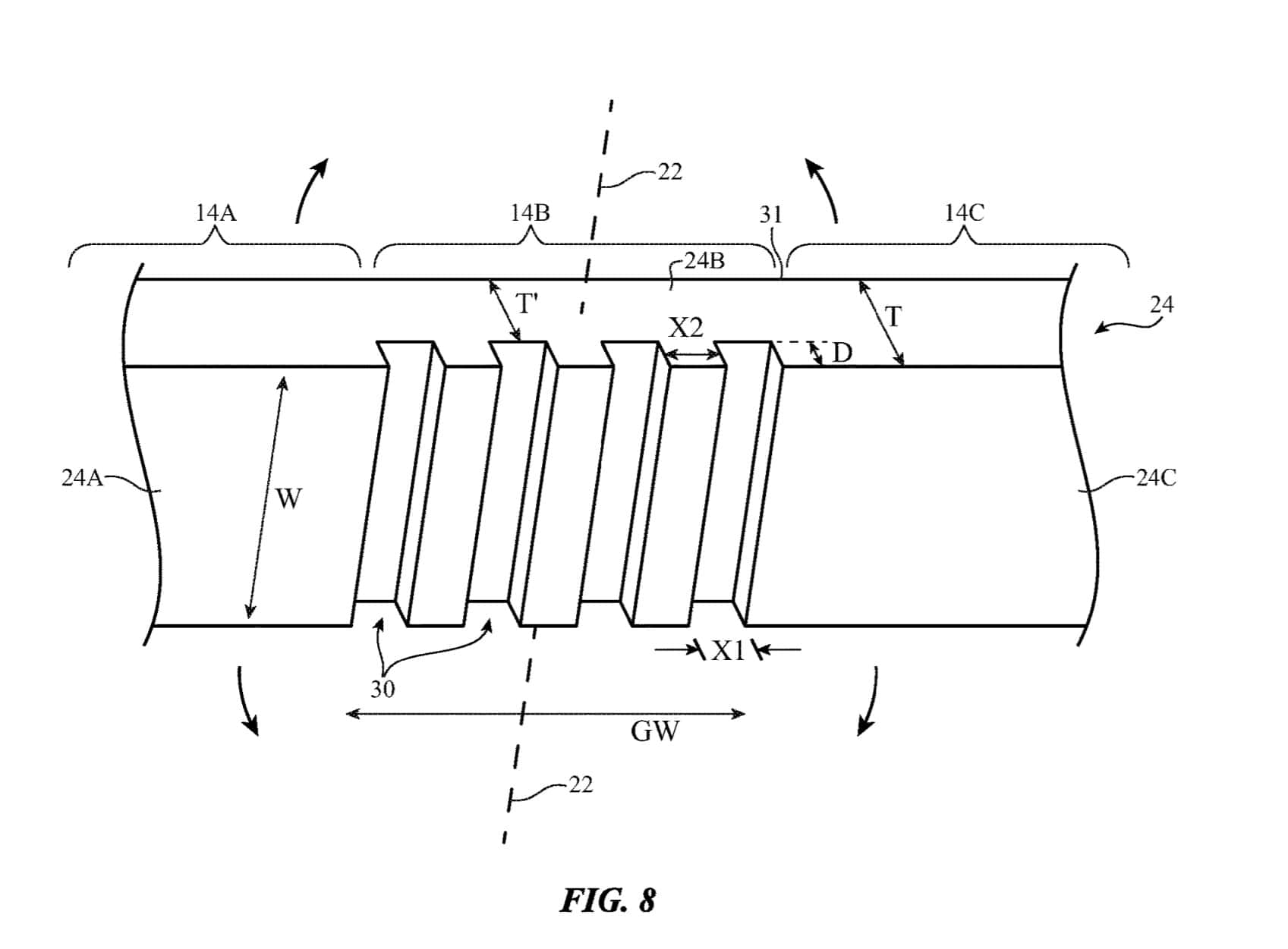Apple patents a unique approach to a flexible glass screen for a folding iPhone
3 min. read
Updated on
Read our disclosure page to find out how can you help MSPoweruser sustain the editorial team Read more

We recently posted on a report Apple’s folding iPhone will consist of two panels of glass like the Surface Duo rather than a folding panel like the Samsung Galaxy Fold, but this does not mean the company is not working on achieving the dream of a bezel-free folding device.
A recently published patent application filed in March 2020 suggests a unique approach to getting a thick glass screen to fold.
Apple proposes cutting a series of grooves into the interior aspect of the surface glass, which would give the glass the flexibility to bend without breaking, a process which in wood is called Kerfing, and which can be seen demonstrated in this video below:
Apple proposes filling the resulting grooves with elastomeric polymer or fluid with the same refractive index as the glass, practically making the grooves invisible.
The grooves would of course only be in the fold region of the glass, and the rest of the display would be normal.
The summary of the invention reads:
An electronic device may have a display. The electronic device may have a hinge that allows the device to be flexed about a bend axis. The display may overlap the bend axis.
To facilitate bending of the display about the bend axis, the display may have one or more layers such as an outer display cover layer with grooves or other recesses. The display cover layer may be formed from glass or other transparent materials. The recesses may form a flexible portion in a display layer that allows glass or other transparent materials of the display layer to bend about the bend axis.
The grooves or other recesses may be filled with polymer or other materials. In some configurations, a display layer may have openings that are filled with liquids. In display layer arrangements with flexible glass or polymer structures, the material that fills the grooves or other openings in the display layer may have an index of refraction value that matches the index of refraction of the glass or polymer structures.
A hinge may be formed between rigid planar layers that are separated by a gap. The rigid planar layers may be glass layers or other transparent layers in a display or may be housing walls or other structural portions of an electronic device. Flexible layers that lie flush with opposing surfaces of the rigid planar layers may be used to span the gap and form the hinge.
Apple’s approach of using truly flexible material may be somewhat mechanically less complex at the expense of being more difficult to manufacture.
The full patent can be seen here.
What do our readers think of this approach? Let us know below.
Via Seekdevice










User forum
0 messages